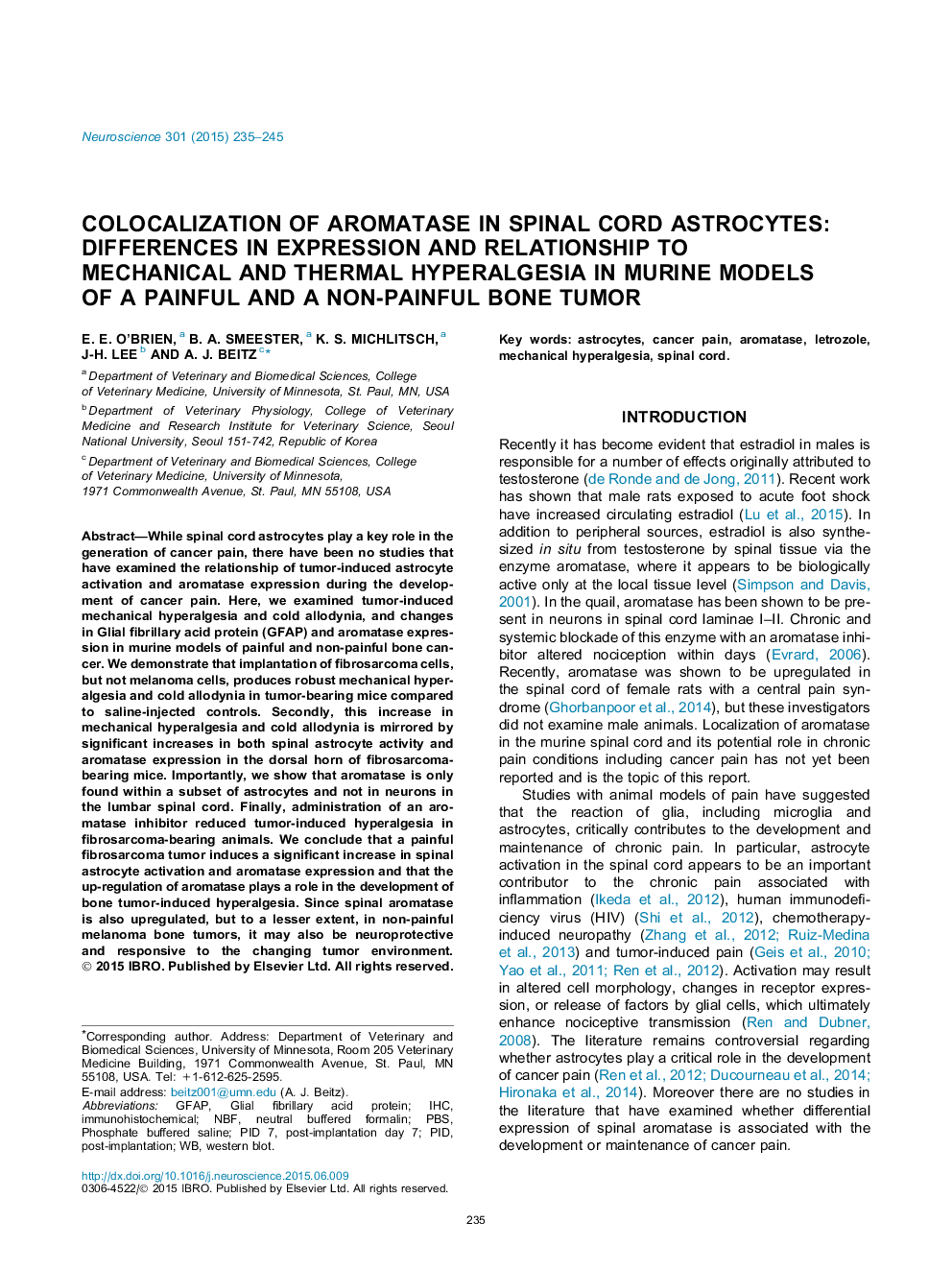| Article ID | Journal | Published Year | Pages | File Type |
|---|---|---|---|---|
| 6272178 | Neuroscience | 2015 | 11 Pages |
â¢Tumor nociception is associated with increases in spinal astrocyte activity.â¢Tumor nociception is associated with increases in spinal aromatase expression.â¢Administration of an aromatase inhibitor reduces tumor-induced hyperalgesia.
While spinal cord astrocytes play a key role in the generation of cancer pain, there have been no studies that have examined the relationship of tumor-induced astrocyte activation and aromatase expression during the development of cancer pain. Here, we examined tumor-induced mechanical hyperalgesia and cold allodynia, and changes in Glial fibrillary acid protein (GFAP) and aromatase expression in murine models of painful and non-painful bone cancer. We demonstrate that implantation of fibrosarcoma cells, but not melanoma cells, produces robust mechanical hyperalgesia and cold allodynia in tumor-bearing mice compared to saline-injected controls. Secondly, this increase in mechanical hyperalgesia and cold allodynia is mirrored by significant increases in both spinal astrocyte activity and aromatase expression in the dorsal horn of fibrosarcoma-bearing mice. Importantly, we show that aromatase is only found within a subset of astrocytes and not in neurons in the lumbar spinal cord. Finally, administration of an aromatase inhibitor reduced tumor-induced hyperalgesia in fibrosarcoma-bearing animals. We conclude that a painful fibrosarcoma tumor induces a significant increase in spinal astrocyte activation and aromatase expression and that the up-regulation of aromatase plays a role in the development of bone tumor-induced hyperalgesia. Since spinal aromatase is also upregulated, but to a lesser extent, in non-painful melanoma bone tumors, it may also be neuroprotective and responsive to the changing tumor environment.
